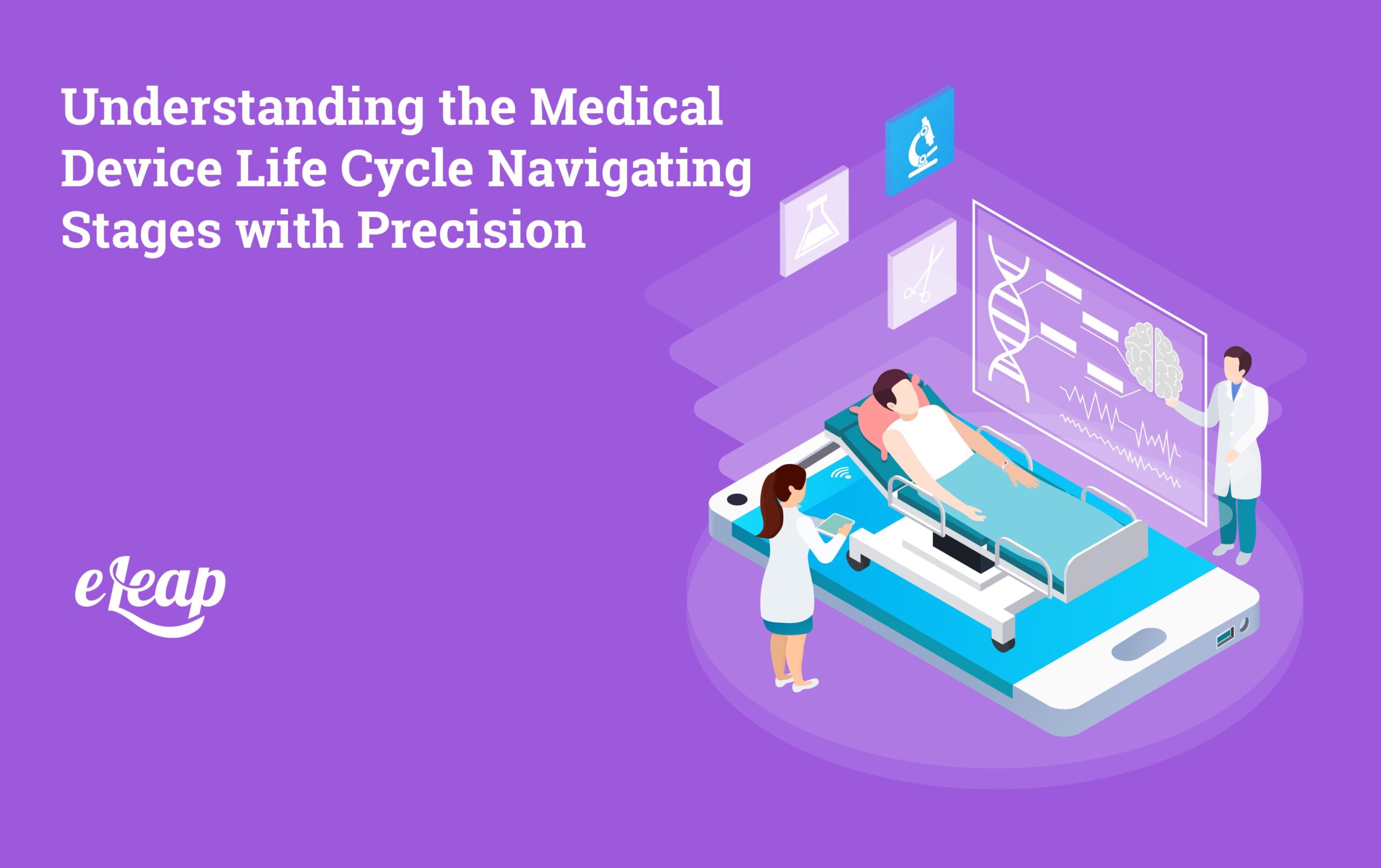Understanding the Medical Device Life Cycle Navigating Stages with Precision

Knowing the Life Cycle of a Medical Device and Getting Around with Precision, Medical devices are essential to healthcare; developing and bringing them to Market is intricate and multidimensional. In-depth discussions of each stage of the medical device life cycle and an emphasis on the difficulties and significance of effective life cycle management will be covered in this article.
Overview Of Medical Device Life Cycl

The phases a medical device goes through, from conception to post-market surveillance, are included in the life cycle. Healthcare providers, regulatory agencies, and manufacturers must comprehend its life cycle.
Importance of Knowing the Life Cycle of Medical Devices
Effective life cycle management guarantees regulatory compliance, patient safety, and a competitive advantage in the marketplace. For medical device equipment manufacturers to create safe and effective products, they must precisely navigate each stage’s intricacies.
- Medical Device Life Cycle Stages
- Design and Conceptualization
A strong concept lays the groundwork for a medical gadget to succeed. It’s critical to comprehend user requirements and market desires throughout this stage.
Medical equipment that is functional and user-friendly meets the demands of patients and healthcare professionals and is ensured by user-centered design.
Development and Research
Before going into full-scale production, manufacturers can use prototyping to test and improve their designs and ensure they are practical, safe, and effective.
Ensuring that the device satisfies safety and quality requirements during the R&D process requires strict adherence to regulatory standards.
Production
To fulfill demand without sacrificing quality, full-scale production demands meticulous planning before moving from prototyping.
Strict quality control procedures are required to ensure that every gadget satisfies the requirements before going on sale.
Market introduction and distribution
Effective supply chains guarantee that the device reaches end customers on schedule and are crucial to timely distribution.
A thriving market launch necessitates marketing techniques that raise awareness and foster consumer and healthcare professional trust.
After-the-Market Monitoring
It is essential to monitor the item’s performance to spot and fix any problems that may occur once it is out on the Market.
It is imperative to have a proactive stance while managing adverse occurrences to guarantee prompt actions that uphold patient safety and regulatory compliance.
Obstacles in the Life Cycle of Medical Devices
For manufacturers, navigating intricate and changing regulatory regimes is a major issue that calls for ongoing alertness and flexibility.
Developments in Technology
The swift progress of technology presents difficulties in maintaining competitive, compliant, and up-to-date equipment on the Market.
Sustained success requires an understanding of and ability to adapt to changes in market dynamics, such as consumer preferences and healthcare regulations.
Life Cycle Management: Its Significance
Security of Patients
Effective life cycle management guarantees that devices stay safe and effective for their lives, directly affecting patient safety.
Adherence to Regulations
In the healthcare sector, gaining market acceptance and sustained performance depends on meeting regulatory requirements.
Advantage of Competition
Manufacturers may maintain a competitive advantage and remain ahead of the curve by managing life cycles efficiently in a constantly changing market.
Case Studies
- Medical Device Life Cycle Management Success Stories
Analyzing successful examples offers insightful information about best practices and effective life cycle navigation techniques.
- Taking Lessons from Mistakes
Failure analysis provides guidance on potential dangers, which leads to better industrial procedures and increased patient safety.
- Prospective Patterns
- Emerging Technologies’ Impact
Investigate how medical device life cycle management may change due to the development of technology like artificial intelligence and networked devices.
- Changing Regulatory Environment
To maintain an advantage in compliance and market approval procedures, one must anticipate and adjust to changes in the regulatory environment.
Concluding Remarks
In conclusion, manufacturers and other industry players must comprehend the nuances of the Medical Device Life Cycle. Precisely navigating the phases, resolving issues, and adopting effective life cycle management support patient safety and long-term success in a cutthroat industry.
Answers to Common Questions (FAQs)
Q: What is the average duration of the Medical Device Life Cycle?
A: Depending on the complexity of the device and the standards set by the regulations, the duration can vary and span from a few years to more than ten years.
Q: What part does regulatory compliance play in the life cycle?
A: Regulatory compliance is essential at every level to guarantee patient safety and market approval.
Q: How do producers handle difficulties with post-purchase surveillance?
A: To guarantee patient safety, manufacturers put in place reliable monitoring systems and act quickly in the case of an adverse incident.
Q: What are some typical mistakes made when managing the life cycle of medical devices?
A: Common mistakes include doing too little market research, doing shoddy prototypes, and paying too little attention to regulation changes.
Q: How might new technologies affect future medical device life cycle management?
A: New technologies like artificial intelligence and linked gadgets have the potential to optimize workflows, boost productivity, and increase device performance.